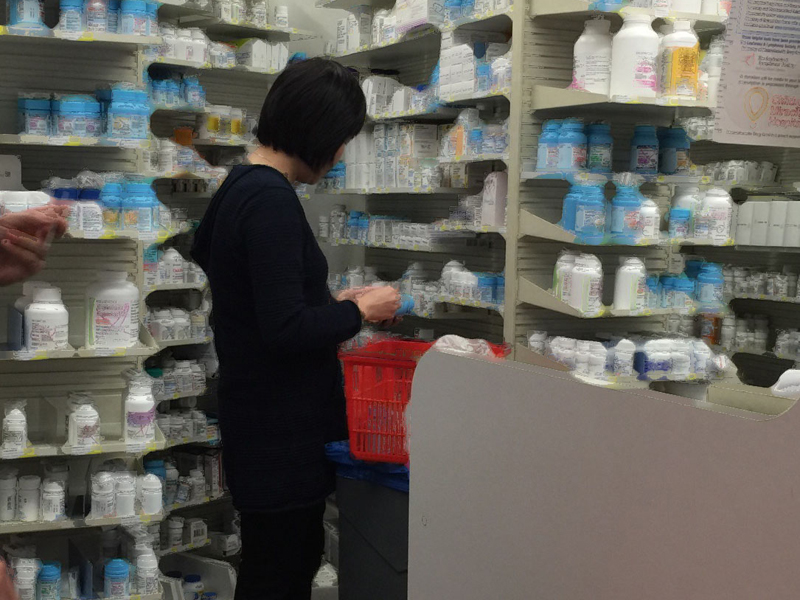Drugs from the Big Bottle

The other day in the drugstore I observed how the pharmacist counted pills out of a big bottle and then scooped them by her bare hands into the vial the patient was going to receive. I don’t know how many prescriptions she had taken out of the hands of sick customers, how many times she had touched the keyboards that everyone in the pharmacy was using, and whether she washed her hands before handling the pills. It all added to my concern and annoyance over the way drugs are sold in US. This process wastes the time of the consumer and that of a highly trained pharmacist. It adds cost and risk to a broken system.
When buying over-the counter drugs, let’s say Tylenol, the vial is securely triple-sealed. This all came about after the Tylenol crisis (1): In 1982, an unknown suspect had removed Tylenol bottles from the shelves and injected deadly dosages of cyanide into the capsules. As a result 65 people died. Even though not directly responsible, the manufacturer, Johnson and Johnson, recalled all their capsules, and then later reissued them in tamper-proof vials. Pretty much all food packaged by manufactures is sealed nowadays, even your orange juice and milk bottle. So why can’t I get prescription drugs in a sealed package?
Fake counterfeit drugs that look like the real thing but contain inactive or even dangerous ingredients are becoming a major concern. The Drug Enforcement Agency considers those counterfeit drugs a global threat (2). Manufacturers spend millions on working to authenticate their products. Fake drugs are a $200 Billion industry worldwide (3). Considering the high cost of drugs producing fakes or stealing real ones and replacing them with fake pills is a great incentive for criminals. Therefore, shouldn’t one make it as hard to prevent easy exchanges in the supply chain? And those big bottles of medications on the picture certainly are not reassuring.
There are expiration dates for drugs. How does one know that what is printed to the pill vial is really the expiration date of the pills that came from the big bottle? Also how does the frequent opening of the bottle affect shelf life? Trust may be a good thing but when it comes to health, control sounds much more reassuring.
When drugs are prescribed there typically is a given amount for a given course of disease. Antibiotics should not be taken for too long or too short a time to be active. That could be reflected in the vial size. Manufacturers can easily adapt to making a few different sized vials in their factories. Pharmacies are able to handle that in Europe so why can’t it be done here?
Having a highly educated pharmacist count pills by hand only adds completely unnecessary cost to the system. It also wastes your time. How often have you been asked to wait for 15-30 minutes until your prescription is “filled”?
References
(1) http://iml.jou.ufl.edu/projects/Fall02/Susi/tylenol.htm
(2) http://www.fda.gov/Drugs/ResourcesForYou/Consumers/BuyingUsingMedicineSafely/CounterfeitMedicine/
(3) (https://en.wikipedia.org/wiki/Pharma_fraud).
